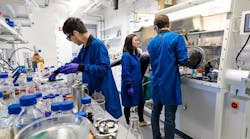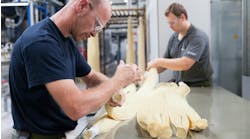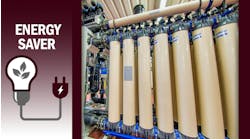Advancing Separations Technology Through Collaborative Innovation
Separations technologies play a critical role in the development of clean energy solutions, including lithium-ion batteries. But people often overlook the importance of separations in the development of new technologies, potentially resulting in missed opportunities to decrease energy intensity in material processing, says Ignasi Palou-Rivera, executive director and chief technology officer for the Rapid Manufacturing Institute at the American Institute of Chemical Engineers (AIChE).
Palou-Rivera was one of four panelists participating in a separations technology virtual event hosted by the University of Chicago, Argonne National Laboratory and Fermi National Accelerator Laboratory on Dec. 5. The panel experts stressed the need for more collaboration among industry stakeholders to bring more sustainable separations technologies to market.
“When looking at designing new processes and new technologies for processing materials for processing chemicals, reaction always comes to mind as first, and separation is something you do because your reaction is not good enough,” Palou-Rivera said. “Well, that's not quite the case, and in many cases, the separation steps are where a lot of the energy, a lot of the costs are and what makes or breaks the process.”
The separations process is of particular interest in lithium extraction, where battery processors are looking to increase efficiency and cost effectiveness. They also face increased scrutiny over the environmental impact of lithium mining techniques, including energy-intensive brine extraction, as Chemical Processing contributor Barry Perlmutter described in a previous column. While new separations technologies can minimize the environmental impact of lithium mining, battery processors may push back on unproven methods, said Gavin Dillingham, executive adviser, federal affairs at SLB, a provider of technology and solutions for the energy industry.
“There's a concern, I think, up and down the value chain of disrupting that too much too quickly,” he explained.
Industry must partner with third parties, including academia, to validate the effectiveness of new separations technologies, he said. University researchers presented some of the latest developments in separations technology after the panel discussion. This includes research on electrochemical lithium extraction from seawater at the University of Chicago. This process uses a new material from the layered cobalt oxide family that has demonstrated the ability to efficiently extract lithium from seawater, which has abundant resources of lithium but in low concentrations.
But moving new separations technologies from the lab to commercial applications remains a challenge for the chemical industry due to cost and time, remarked Andrea Course, digital innovation program manager at Shell.
“Scaling up while maintaining performance, cost-effectiveness, reliability, that's a huge challenge, and I think that is the challenge that we're facing,” she said. “It's not that the technology isn’t there, it's just that the technology hasn't been scaled.”
Achieving scalability may require a level of cross-industry collaboration that’s uncomfortable for many companies in the chemical sector. As an example, Palou-Rivera pointed to Dow and Shell partnering as members of the Rapid Manufacturing Institute to scale the development of microwave reactors. Such partnerships are made possible by establishing trust through shared objectives, Palou-Rivera said. DOE funding also helped make the partnership a worthwhile endeavor, he explained.
Course said Shell often works with competitors like BP and Chevron to bring new technologies to market.
“We work very closely together with what you would call our competitors because, again, we all have this massive problem that we know if I invest in a startup, that startup is not going to be successful unless everybody else in the industry is working with them,” she said. “It only makes them better.”



